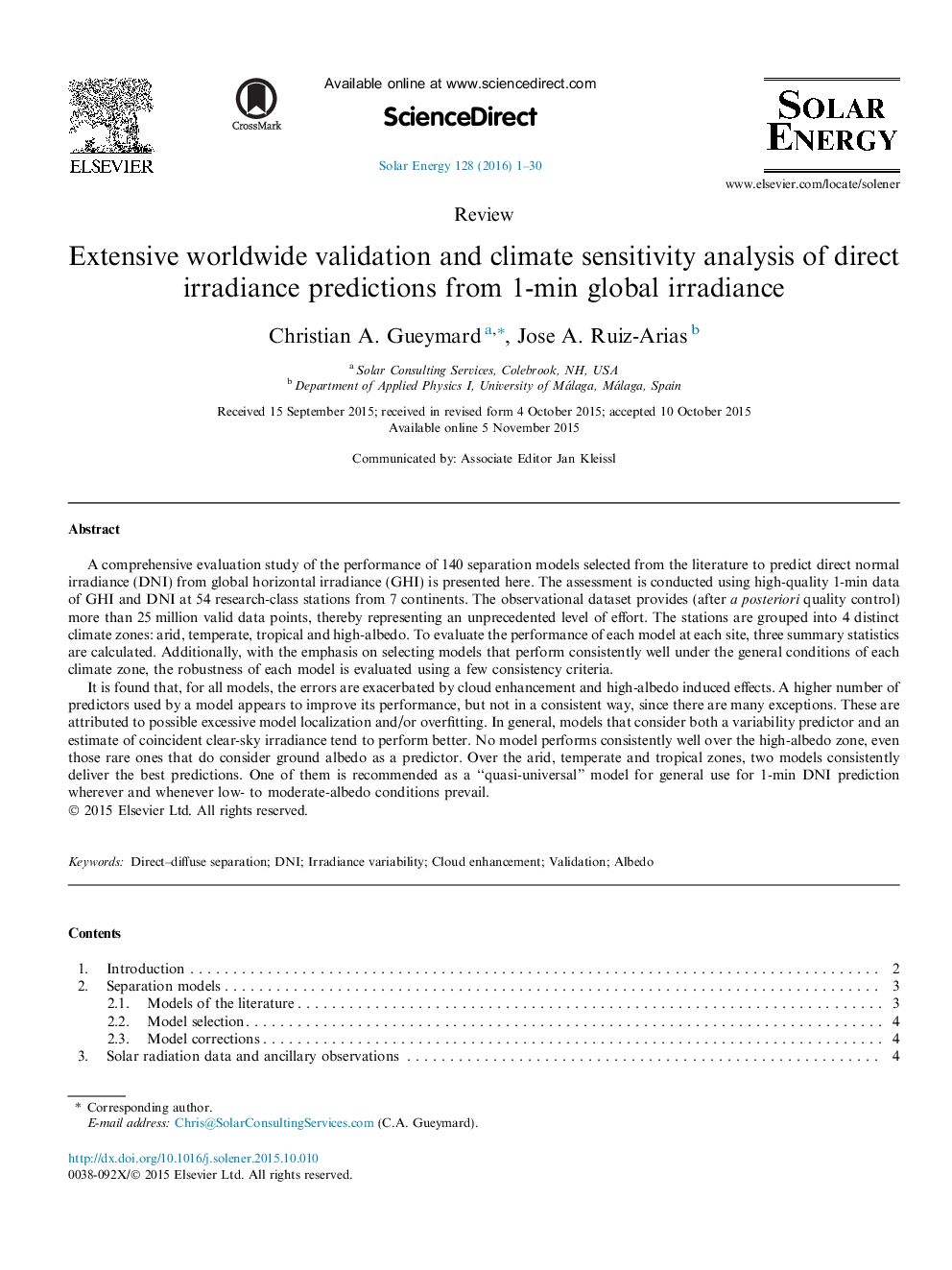| کد مقاله | کد نشریه | سال انتشار | مقاله انگلیسی | نسخه تمام متن |
|---|---|---|---|---|
| 1549461 | 1513090 | 2016 | 30 صفحه PDF | دانلود رایگان |
• Evaluation of 140 direct/diffuse component-separation models using global irradiance.
• One-minute measured data from 54 stations compared with model results.
• Four climate types evaluated with respect to model efficacy.
• Cloud enhancement and high surface albedo situations result in large prediction errors.
• Models appropriate or effective for different climate zones identified.
A comprehensive evaluation study of the performance of 140 separation models selected from the literature to predict direct normal irradiance (DNI) from global horizontal irradiance (GHI) is presented here. The assessment is conducted using high-quality 1-min data of GHI and DNI at 54 research-class stations from 7 continents. The observational dataset provides (after a posteriori quality control) more than 25 million valid data points, thereby representing an unprecedented level of effort. The stations are grouped into 4 distinct climate zones: arid, temperate, tropical and high-albedo. To evaluate the performance of each model at each site, three summary statistics are calculated. Additionally, with the emphasis on selecting models that perform consistently well under the general conditions of each climate zone, the robustness of each model is evaluated using a few consistency criteria.It is found that, for all models, the errors are exacerbated by cloud enhancement and high-albedo induced effects. A higher number of predictors used by a model appears to improve its performance, but not in a consistent way, since there are many exceptions. These are attributed to possible excessive model localization and/or overfitting. In general, models that consider both a variability predictor and an estimate of coincident clear-sky irradiance tend to perform better. No model performs consistently well over the high-albedo zone, even those rare ones that do consider ground albedo as a predictor. Over the arid, temperate and tropical zones, two models consistently deliver the best predictions. One of them is recommended as a “quasi-universal” model for general use for 1-min DNI prediction wherever and whenever low- to moderate-albedo conditions prevail.
Journal: Solar Energy - Volume 128, April 2016, Pages 1–30
